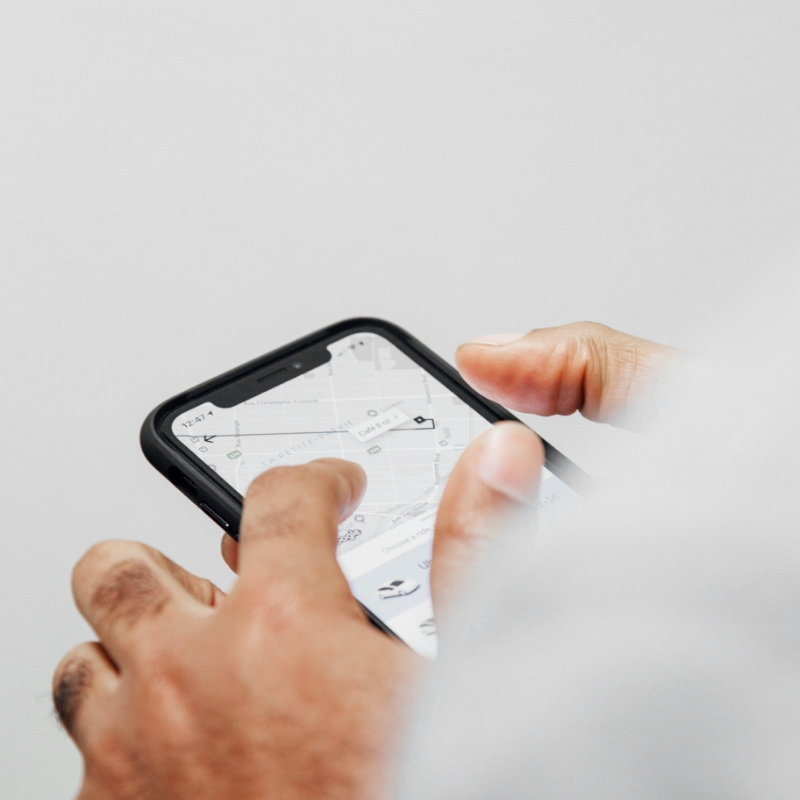
After extensive debate, CFM regulates the practice of Telemedicine in Brazil
The Federal Council of Medicine (CFM) released this Thursday (4) Resolution No. 2,314/2022 (ACCESS HERE), which defines and regulates telemedicine in Brazil, as a form of medical services mediated by technology and communication. The norm, the result of a broad debate reopened in 2018 with medical organizations and specialists, now regulates the practice in place of CFM Resolution No. 1643/2002 and comes into force from the date of its publication.
“Based on strict ethical, technical and legal parameters, the rule opens the door to comprehensiveness for millions of Brazilians who depend exclusively on the Unified Health System (SUS) and, at the same time, provides security, privacy, confidentiality and integrity of data patients”, highlighted the president of the CFM, José Hiran Gallo.
For him, it is a method that, especially during the pandemic, has demonstrated its great capacity to bring assistance to the cities of the interior and also benefit the big centers, reducing the strangulation caused by the demand and the migration of patients in search of treatment.
The norm ensures that the physician duly registered with the Regional Councils of Medicine has the autonomy to decide whether to use or refuse telemedicine, indicating face-to-face care whenever he deems it necessary. This autonomy is limited to the principles of beneficence and non-maleficence of the patient and in line with ethical and legal precepts.
“The face-to-face medical consultation remains the gold standard, that is, a reference in patient care. But the pandemic has shown that telemedicine can be an important complementary act to medical care, allowing access to thousands of patients”, highlighted the standard’s rapporteur, Donizetti Giamberardino. The starting point for the preparation of the recently approved Resolution, according to him, was also to put Brazilian medical assistance in line with innovation and advances in technology.
For the CFM, when exercised with the use of safe technological and digital means, medicine must aim at the benefit and the best results for the patient, the physician must assess whether telemedicine is the most appropriate method for the patient’s needs in that situation. “The doctor who uses telemedicine, aware of his legal responsibility, must assess whether the information received is qualified, within strict digital security protocols and sufficient for the proposed purpose”, points out the norm.
Wide debate – Donizetti Giamberardino assesses that, by legal force, the health crisis caused a significant increase in the use of Telemedicine, providing even more relevance to CFM to emanate the update of its regulations, which had already been discussed since 2018. , he explains, a Special Committee evaluated almost two thousand proposals on the subject and that were sent by doctors working in public and private services.
In addition, CFM opened the topic for medical entities from all over the country to present their contributions, in writing or in specific meetings. Among the participating entities are the Brazilian Medical Association (AMB), the National Federation of Doctors (Fenam), the Brazilian Medical Federation (FMB), Regional Councils of Medicine (CRMs), specialty societies, medical associations and medical unions.
“With this initiative, CFM reinforces its commitment assumed with the category of broadening discussions about changes in these rules, seeking to involve different segments of representation”, highlighted Giamberardino. From now on, CFM Resolution No. 2,314/2022 defines and regulates telemedicine as a form of medical services mediated by technology and communication.
Security and privacy – To ensure respect for medical confidentiality, for example, a fundamental ethical principle in the relationship with patients, in services provided by telemedicine “the data and images of patients, contained in the medical record must be preserved, in compliance with the norms legal and CFM relevant to the custody, handling, integrity, veracity, confidentiality, privacy, irrefutability and guarantee of professional secrecy of information”.
According to the new resolution, telemedicine care must be recorded in physical medical records or using information systems, in the patient’s Electronic Health Record System (SRES), meeting the standards of representation, terminology and interoperability.
The anamnesis and propaedeutic data and the results of complementary exams, and the medical conduct adopted, related to the care provided by telemedicine must also be preserved, under the custody of the doctor responsible for the care in his own office or the technical director, in case of intervention of company or institution.
Patient agreement – The resolution establishes that the patient or his/her legal representative must authorize telemedicine care and the transmission of their images and data through (agreement and authorization term) free and informed consent, sent electronically or by recording of reading the text and agreement, and should be part of the patient’s SRES.
It also establishes that, in the case of remote issuance of the report, it must contain the physician’s identification, including name, registration number in the CRM and professional address of the physician, identification and data of the patient, in addition to the date, time and signature of the physician with digital certification of the physician in the ICP-Brasil standard or another legally accepted standard. In addition, personal and clinical data from medical telecare must follow the definitions of the LGPD and other legal provisions regarding the primary purposes of the data.
“There is no doubt that this technological innovation makes a great contribution to patient care, but as with any healthcare act, the patient needs to be assured that there is a credible governance structure in place. The quality and safety of care should be a priority at these service points”, points out the rapporteur.
Check out some of the highlights of the new Telemedicine Resolution:
Face-to-face consultation: the doctor has the autonomy to decide whether or not the first consultation may be face-to-face. It is reiterated that the gold standard of reference for medical consultations is the meeting in person, with telemedicine being a complementary act. Distance medical services can never replace the constitutional commitment to guarantee face-to-face assistance according to the SUS principles of comprehensiveness, equity, universality for all patients.
Clinical follow-up: When treating chronic diseases or diseases that require long-term care, a face-to-face consultation must be carried out with the patient’s attending physician, at intervals not exceeding 180 days.
Security and secrecy: the data and images of the patients, contained in the medical record, must be preserved, obeying the legal rules and the CFM relevant to the custody, handling, integrity, veracity, confidentiality, privacy, irrefutability and guarantee of professional secrecy of information.
Term of consent: the patient or his legal representative must expressly authorize telemedicine care and the transmission of his images and data.
Medical fees: the provision of telemedicine services, as a medical care method, in any modality, must follow the usual regulatory and ethical standards for face-to-face care, including in relation to the financial consideration for the service provided.
Territoriality: companies providing telemedicine services, communication platforms and data archiving must have their headquarters established in Brazilian territory and be registered in the CRM of the state where they are headquartered, with the respective technical responsibility of a physician regularly enrolled in the same Council.
Inspection: the CRMs will maintain surveillance, inspection and evaluation of telemedicine activities, in their territories, with regard to the quality of care, doctor-patient relationship and preservation of professional secrecy.
Seven modalities distinguish the practice of Telemedicine
The resolution establishes that telemedicine is “the exercise of medicine mediated by Digital, Information and Communication Technologies (TDICs), for the purposes of assistance, education, research, disease and injury prevention, management and health promotion”, and can be carried out in real time online (synchronous), or offline (asynchronous).
According to the new Resolution, remote assistance can be carried out through seven different modalities. See details below.
TELECONSULTATION: characterized as a non-face-to-face medical consultation, mediated by DICTs, with doctor and patient located in different spaces.
TELECONSULTING: act of consulting mediated by TDICs between physicians, managers and other professionals, with the purpose of providing clarification on administrative procedures and health actions.
TELEINTERCONSULTATION: Occurs when there is an exchange of information and opinions between physicians, with or without the presence of the patient, for diagnostic or therapeutic, clinical or surgical assistance. It is very common, for example, when a family and community doctor needs to hear the opinion of another specialist about a patient’s problem.
TELEDIAGNOSIS: The issuance of a report or opinion of exams, through graphics, images and data sent over the internet is now also allowed and is defined as telediagnosis. In these cases, the procedure must be performed by a physician with a Specialist Qualification Record (RQE) in the related area.
TELESURGERY: It is when the procedure is performed by a robot, manipulated by a doctor who is in another location. This modality was recently disciplined by Resolution CFM nº 2.311/2022, which regulated robotic surgery in Brazil.
TELEVIGILANCE: Also known as telemonitoring, it consists of the act carried out under the coordination, indication, guidance and supervision of health or disease parameters, through clinical evaluation or direct acquisition of images, signals and data from equipment or devices added or implanted in patients.
TELETRIAGE: carried out by a doctor to assess the patient’s symptoms, remotely, for outpatient or hospital regulation, defining and directing him to the appropriate type of assistance he needs or to a specialist.
Source: CFM



Leave a Reply